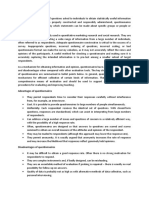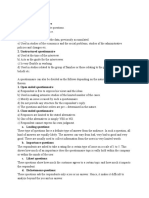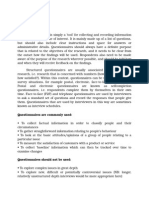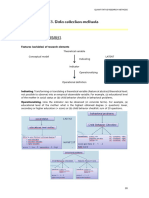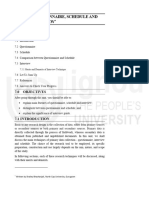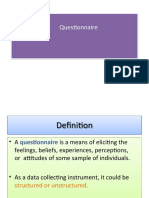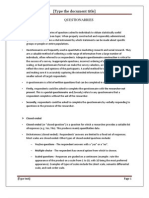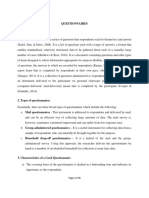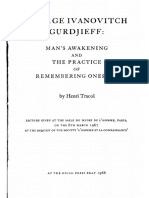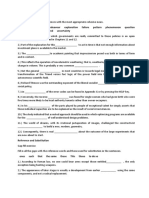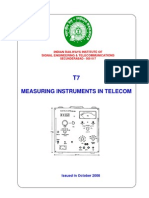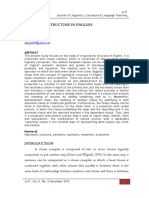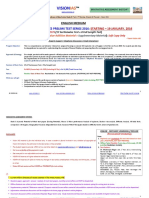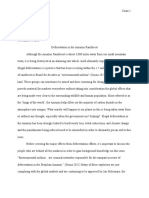0% found this document useful (0 votes)
103 views4 pagesFunctions of Questionnaire
This document discusses the functions, types, development process, advantages, and disadvantages of questionnaires. It notes that questionnaires can translate research objectives into specific questions, standardize questions and responses, foster cooperation and motivation, serve as permanent records, and speed up data analysis. There are two types: structured questionnaires that use standardized task inventories, and open-ended questionnaires that allow respondents to describe work in their own words. Advantages include low cost, ease of analysis, familiarity to respondents, and reduced bias; disadvantages include impersonal nature, inability to explain questions, and potential unreliability due to peer pressure or desire to impress the researcher.
Uploaded by
Sohaib SafwanCopyright
© Attribution Non-Commercial (BY-NC)
We take content rights seriously. If you suspect this is your content, claim it here.
Available Formats
Download as DOCX, PDF, TXT or read online on Scribd
0% found this document useful (0 votes)
103 views4 pagesFunctions of Questionnaire
This document discusses the functions, types, development process, advantages, and disadvantages of questionnaires. It notes that questionnaires can translate research objectives into specific questions, standardize questions and responses, foster cooperation and motivation, serve as permanent records, and speed up data analysis. There are two types: structured questionnaires that use standardized task inventories, and open-ended questionnaires that allow respondents to describe work in their own words. Advantages include low cost, ease of analysis, familiarity to respondents, and reduced bias; disadvantages include impersonal nature, inability to explain questions, and potential unreliability due to peer pressure or desire to impress the researcher.
Uploaded by
Sohaib SafwanCopyright
© Attribution Non-Commercial (BY-NC)
We take content rights seriously. If you suspect this is your content, claim it here.
Available Formats
Download as DOCX, PDF, TXT or read online on Scribd
/ 4
